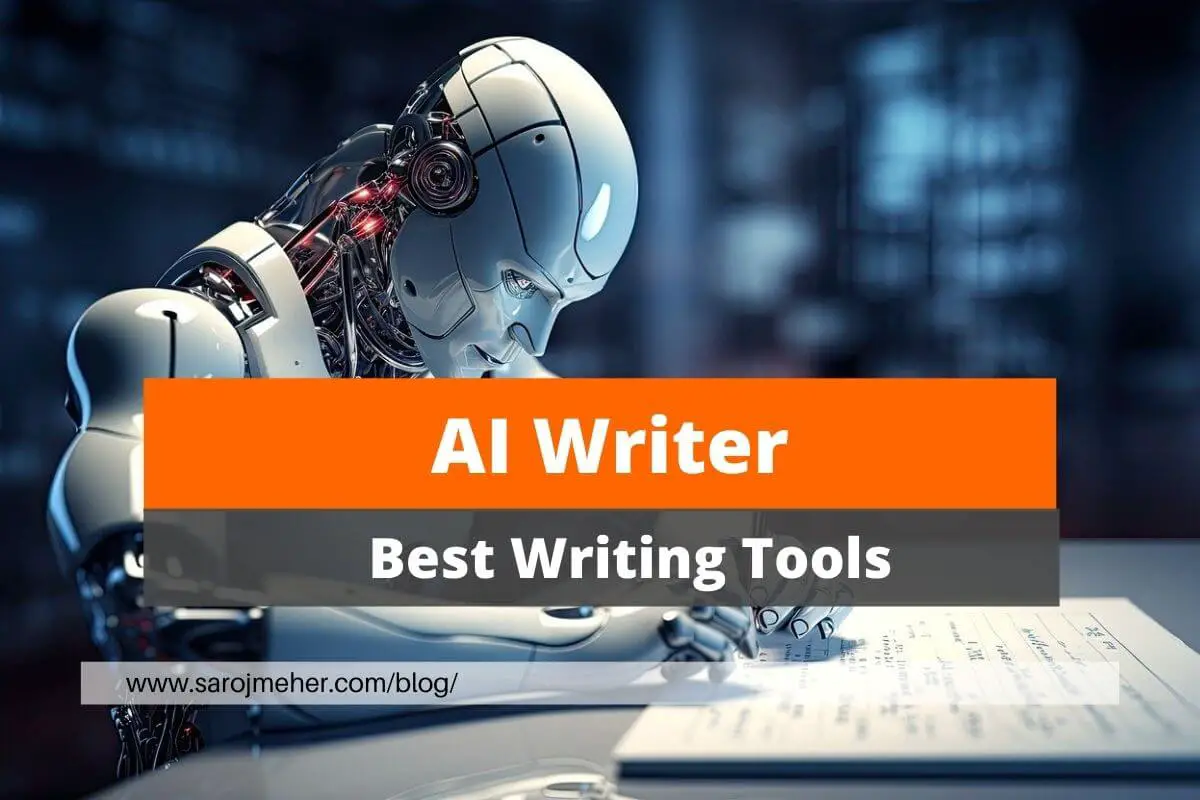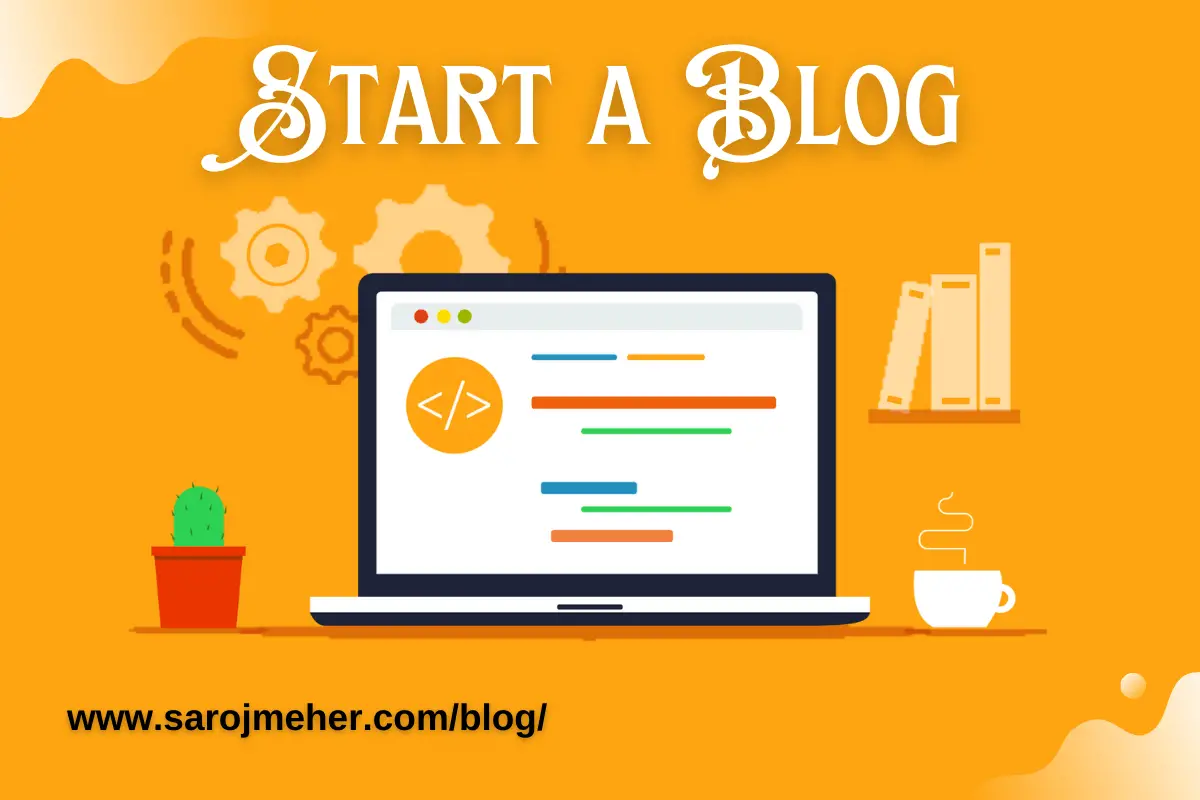What is AI?
AI, or Artificial Intelligence, refers to the simulation of human intelligence in machines that are designed to think and act like humans. These intelligent systems can perform tasks such as recognizing speech, making decisions, solving problems, and learning from experience.
There are several branches of AI, including machine learning, deep learning, computer vision, natural language processing, and robotics. Some AI systems are designed to be specialized in a single task, while others are more general-purpose and can perform a wide range of tasks.
The goal of AI research is to create machines that can perform tasks that normally require human intelligence, such as recognizing patterns, understanding natural language, and making decisions. AI systems are being used in a variety of fields, including healthcare, finance, transportation, and manufacturing, to automate processes, improve efficiency, and provide better services to customers.
Who invented AI (Artificial Intelligence)?
Artificial Intelligence (AI) as a field of study and a term was first coined by John McCarthy, who is considered the father of AI, in 1956. However, the development of AI has been a collaboration of many researchers and scientists from various disciplines over several decades.
AI has its roots in mathematics, computer science, psychology, and engineering, and the development of AI has been influenced by the work of many pioneers in these fields. For example, Alan Turing‘s work on the concept of a machine that can perform any task that can be described algorithmically laid the foundation for the development of AI.
In the early days of AI, researchers were focused on creating systems that could perform tasks that were previously thought to require human intelligence, such as playing chess and solving mathematical problems. Over time, the field of AI has expanded and grown to encompass many different areas of research and development, from machine learning and natural language processing to robotics and computer vision.
While John McCarthy is credited with coining the term AI and helping to establish the field of AI, it is the result of the collective efforts of many researchers and scientists over several decades.
What are the 4 types of AI (Artificial Intelligence)?
There are several different ways to categorize AI, but one common classification system divides AI into four main types:
- Reactive Machines: These are the most basic form of AI and are not capable of self-awareness. Reactive machines can only respond to the environment and make decisions based solely on past experiences. For example, a simple chess-playing AI that makes moves based on a set of pre-programmed rules.
- Limited Memory: These AI systems have a limited memory and can use past experiences to inform current decisions. For example, an autonomous car that uses its onboard cameras and sensors to detect obstacles and make driving decisions based on previously encountered situations.
- Theory of Mind: This type of AI is designed to understand the mental states of other beings, such as their goals, intentions, and beliefs. Currently, this type of AI does not exist, and it is still a subject of research in the field of AI.
- Self-Aware: This is the highest level of AI and refers to systems that have a sense of self-awareness and consciousness. Currently, this type of AI does not exist and remains a topic of science fiction and philosophical debate.
It’s important to note that the different types of AI can overlap and be integrated with each other to form more advanced and sophisticated AI systems.
Pros and Cons of AI (Artificial Intelligence)
Pros of AI
There are many potential benefits of Artificial Intelligence (AI), including:
- Increased Efficiency: AI can automate repetitive and mundane tasks, freeing up human workers to focus on more creative and strategic tasks. This can lead to increased efficiency and productivity.
- Improved Accuracy: AI can process large amounts of data quickly and accurately, reducing the chances of human error.
- Enhanced Decision-Making: AI can analyze data and provide insights that humans might not have noticed, leading to better decision-making.
- New Possibilities: AI can be used to develop new products and services that were not previously possible, leading to new business opportunities and economic growth.
- Better Customer Service: AI-powered chatbots and virtual assistants can provide fast and convenient customer service, improving the overall customer experience.
- Increased Accessibility: AI can help make products and services more accessible to people with disabilities, such as speech recognition software for those who are visually impaired.
- Healthcare Advancements: AI can be used to analyze medical data and assist in disease diagnosis and treatment planning, leading to improved patient outcomes.
It’s important to note that AI also raises ethical and societal questions and its development and implementation must be approached with caution and consideration for its potential impact on society and individuals.
Cons of AI
While Artificial Intelligence (AI) offers many potential benefits, there are also some potential drawbacks and challenges to its development and implementation, including:
- Job Loss: AI has the potential to automate many jobs, leading to job losses and increased unemployment. This could have a significant impact on the economy and result in social and economic inequality.
- Bias and Discrimination: AI systems are only as unbiased as the data they are trained on, and if the training data contains biases, these biases can be amplified in the AI system. This can result in discrimination and unfair treatment of certain groups of people.
- Privacy Concerns: AI requires large amounts of personal data to function effectively, raising privacy concerns and the risk of personal information being misused.
- Lack of Transparency: Some AI systems are designed to be “black boxes,” where it is not possible to understand how they arrived at a particular decision. This lack of transparency raises questions about accountability and the ability to correct errors.
- Dependence on Technology: As AI becomes more prevalent, there is a risk that people will become too reliant on technology and lose critical thinking skills.
- Security Risks: AI systems are vulnerable to cyber-attacks, and a successful attack on an AI system could have serious consequences, such as the manipulation of sensitive information or the disruption of critical systems.
- Ethical Concerns: There are many ethical concerns surrounding the development and use of AI, such as the potential for AI systems to be used for harmful purposes, the question of responsibility in the event of an AI-caused accident, and the impact of AI on the workforce and society.
It’s important for society to address these challenges and find ways to mitigate the negative impacts of AI while still reaping the benefits of this powerful technology.
How to use AI: Artificial Intelligence?
Artificial Intelligence (AI) can be used in a variety of applications and industries to automate tasks, improve efficiency, and provide new insights and capabilities. Some common ways to use AI include:
- Chatbots and Virtual Assistants: AI-powered chatbots can be used to provide customer service, handle common inquiries, and guide users through complex processes.
- Predictive Analytics: AI can be used to analyze data and make predictions about future events or trends. This can be useful in fields such as finance, healthcare, and marketing.
- Image and Voice Recognition: AI can be used to analyze images and audio to identify objects, faces, and speech. This is useful in applications such as security systems and voice-controlled virtual assistants.
- Natural Language Processing: AI can be used to analyze and understand human language, which is useful in applications such as language translation and sentiment analysis.
- Robotics and Automation: AI can be used to control and automate physical systems, such as robots and drones.
- Fraud Detection: AI can be used to analyze data and detect fraudulent activities, such as credit card fraud and money laundering.
- Healthcare: AI can be used to analyze medical data and assist in disease diagnosis and treatment planning, leading to improved patient outcomes.
These are just a few examples of how AI can be used. The potential applications of AI are vast, and the technology is constantly evolving and improving, leading to new and exciting possibilities for its use.
AI Marketing
Artificial Intelligence (AI) is increasingly being used in the field of marketing to improve targetting, personalization, and automation of various marketing tasks. Some common applications of AI in marketing include:
- Targeting and Personalization: AI can be used to analyze customer data and provide insights that can be used to personalize marketing messages and improve targetting. This can lead to more effective marketing campaigns and higher conversion rates.
- Chatbots and Virtual Assistants: AI-powered chatbots can be used to interact with customers, provide information, and assist with customer service. This can lead to improved customer experience and increased customer satisfaction.
- Predictive Analytics: AI can be used to analyze customer data and make predictions about future behavior, such as which customers are most likely to purchase a product or service. This information can be used to improve marketing strategies and optimize spending.
- Content Creation: AI can be used to generate written content, such as product descriptions and marketing copy, leading to increased efficiency and improved consistency in messaging.
- Email Marketing: AI can be used to analyze customer data and improve email targeting and personalization, leading to higher open and click-through rates.
- Social Media Marketing: AI can be used to analyze social media data and provide insights that can be used to improve social media marketing strategies and targetting.
By using AI in marketing, companies can improve their marketing efforts and better understand and target their customers, leading to increased sales and improved customer satisfaction.
Role of AI in Affiliate Marketing
Artificial Intelligence (AI) is playing an increasingly important role in the world of affiliate marketing. Here are some of the ways that AI is being used in affiliate marketing:
- Affiliate Link Optimization: AI algorithms can help affiliate marketers to optimize their affiliate links for maximum conversion, by analyzing factors such as click-through rate, conversion rate, and product popularity.
- Personalization: AI can be used to personalize affiliate marketing campaigns based on individual consumer preferences, behavior, and purchase history.
- Predictive Analysis: AI algorithms can be used to analyze consumer behavior and predict future purchasing trends, helping affiliate marketers to target their campaigns more effectively.
- Fraud Detection: AI can help affiliate marketers to detect fraudulent clicks and conversions, ensuring that they receive accurate commission payments.
- Affiliate Network Management: AI-powered tools can help affiliate marketers to manage their affiliate networks, by automating tasks such as payment tracking, commission calculation, and reporting.
- Ad Targeting: AI algorithms can help affiliate marketers to target their advertisements more effectively, by analyzing consumer behavior and preferences, and identifying the best times and platforms to advertise on.
Overall, AI is transforming the world of affiliate marketing, providing affiliate marketers with powerful tools to optimize their campaigns and reach their target audience more effectively.
AI in Business
Artificial Intelligence (AI) is increasingly being adopted by businesses across a wide range of industries to improve efficiency, reduce costs, and gain competitive advantages. Some common ways that AI is being used in business include:
- Automation of Business Processes: AI can be used to automate repetitive and time-consuming tasks, such as data entry and analysis, freeing up employees to focus on more strategic work.
- Predictive Analytics: AI can be used to analyze data and make predictions about future trends and outcomes, such as sales projections and customer behavior.
- Customer Service: AI-powered chatbots and virtual assistants can be used to provide customer service and handle routine inquiries, improving customer experience and satisfaction.
- Supply Chain Optimization: AI can be used to analyze supply chain data and improve processes, such as optimizing routes for deliveries and reducing waste.
- Fraud Detection: AI can be used to analyze financial and transactional data to detect and prevent fraudulent activities, reducing financial losses.
- HR and Talent Management: AI can be used to automate HR processes, such as resume screening and candidate selection, leading to improved efficiency and better talent acquisition.
- Personalized Marketing: AI can be used to analyze customer data and personalize marketing messages and experiences, leading to improved customer engagement and loyalty.
By adopting AI, businesses can gain significant advantages in terms of efficiency, cost savings, and improved customer experiences. However, it is important for businesses to carefully consider the ethical implications of AI and to implement responsible AI practices to ensure that the technology is used in a way that is fair and beneficial to all.
Use of AI in Art
Artificial Intelligence (AI) is being used to create and generate new forms of art, blurring the line between human creativity and machine-generated content. Some common examples of AI art include:
- Generative Art: AI algorithms can be used to generate abstract images, animations, and even music, based on parameters set by the artist. The algorithms can create unique pieces of art that are influenced by the artist’s choices, but also have a degree of unpredictability and randomness.
- AI-Assisted Art: AI can be used to assist artists in the creation of their work, providing suggestions and insights that can inform the creative process. For example, AI can be used to analyze images and suggest color palettes, or to generate brush strokes that an artist can then refine.
- AI-Generated Portraits: AI algorithms can be used to generate portraits that look like real people, based on training data that includes images of faces. The algorithms can create unique portraits that are influenced by the training data, but also have a degree of unpredictability and originality.
- AI-Generated Music: AI algorithms can be used to generate music, based on parameters set by the artist or based on training data that includes music from different genres and styles. The algorithms can create unique pieces of music that are influenced by the artist’s choices or by the training data, but also have a degree of unpredictability and originality.
By using AI in the creation of art, artists can explore new forms of creativity and push the boundaries of what is possible in the world of art. However, it is important to note that AI-generated art is still a relatively new field, and there is an ongoing debate about the value and authenticity of such works.
Use of AI in Blogging
Artificial Intelligence (AI) has become increasingly prevalent in the blogging industry and has greatly impacted the way in which blogs are created, promoted, and monetized. Here are some of the ways AI is being used in the world of blogging:
- Content Creation: AI-powered tools such as GPT-3 can generate high-quality blog content in a matter of seconds, saving bloggers time and effort. These tools can even create custom content based on specific keywords or topics, making the process of content creation much more efficient.
- Content Optimization: AI algorithms can analyze and optimize blog content for search engines, helping bloggers to improve their search engine rankings and attract more organic traffic.
- Social Media Management: AI-powered tools can help bloggers to schedule and publish social media posts, track their performance, and even suggest the best times to post for maximum engagement.
- Monetization: AI can assist bloggers in finding and applying for sponsored content opportunities, helping them to monetize their blogs more effectively.
- Analytics: AI-powered analytics tools can provide bloggers with insights into their audience, including demographics, location, and behavior, helping them to better understand their audience and tailor their content accordingly.
Overall, AI has greatly impacted the blogging industry, making the process of creating, promoting, and monetizing blogs more efficient and effective.
AI vs Human
Artificial Intelligence (AI) and human beings are both unique and have their own strengths and weaknesses. Here is a comparison of AI and humans:
Strengths of AI:
- Speed: AI can process large amounts of data and perform tasks much faster than humans.
- Consistency: AI algorithms are consistent in their output and do not suffer from human error.
- Scalability: AI can be easily scaled to handle large amounts of data and perform complex tasks.
- Objectivity: AI algorithms are free from emotional bias and make decisions based on objective data analysis.
Strengths of Humans:
- Creativity: Humans have the ability to think creatively and generate new ideas and solutions.
- Emotional Intelligence: Humans possess emotional intelligence and are able to understand and respond to emotional cues in a way that AI cannot.
- Flexibility: Humans can adapt to new situations and switch tasks quickly, whereas AI requires specific programming to perform different tasks.
- Ethics: Humans have the ability to make ethical decisions and consider the wider implications of their actions, whereas AI operates within the parameters set by its programming.
It is important to note that AI and humans complement each other in many ways and can be used together to achieve greater results. While AI excels in tasks that require speed and accuracy, humans bring creativity and empathy to the table. The most effective solutions are often achieved by combining the strengths of both AI and human beings.
Is AI a threat to humans?
Artificial Intelligence (AI) has the potential to both positively and negatively impact human society. While AI has the potential to revolutionize industries and improve our lives in many ways, it also has the potential to pose threats to human society. Some of these threats include:
- Job Automation: AI has the potential to automate many jobs, leading to job loss and economic displacement for workers.
- Bias and Discrimination: AI algorithms can perpetuate existing biases and discrimination if they are trained on biased data. This can have a negative impact on marginalized communities and amplify existing social inequalities.
- Privacy Concerns: AI systems can collect, process, and store large amounts of personal data, leading to privacy concerns and the potential for misuse of this data.
- Security Risks: AI systems can be vulnerable to cyber-attacks and malicious use, posing a risk to critical infrastructure and national security.
- Ethical Concerns: As AI systems become more advanced and autonomous, there are ethical concerns about the decisions they make and the potential for harm to human beings.
It is important for society to carefully consider the potential benefits and risks of AI and to develop responsible AI practices and regulations that prioritize the well-being of human society. The key to ensuring that AI benefits society is to approach its development and deployment with caution, transparency, and a commitment to ethical principles.


![[10 Best] AI Tools For Developers In 2024 AI Tools For Developers](https://www.sarojmeher.com/wp-content/uploads/AI-Tools-For-Developers.jpg)







